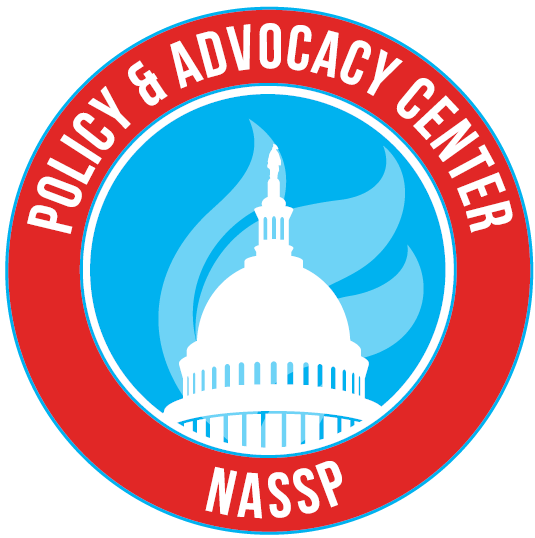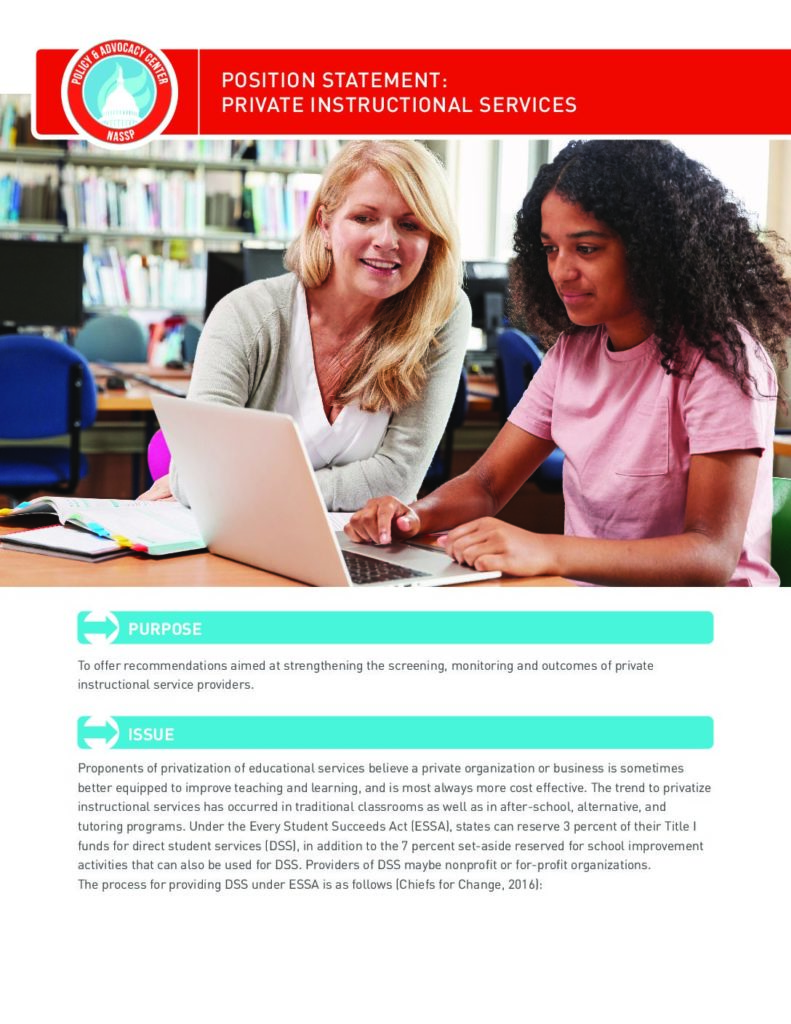To offer recommendations aimed at strengthening the screening, monitoring and outcomes of private instructional service providers.
Proponents of privatization of educational services believe a private organization or business is sometimes better equipped to improve teaching and learning, and is most always more cost effective. The trend to privatize instructional services has occurred in traditional classrooms as well as in after-school, alternative, and tutoring programs. Under the Every Student Succeeds Act (ESSA), states can reserve 3 percent of their Title I funds for direct student services (DSS), in addition to the 7 percent set-aside reserved for school improvement activities that can also be used for DSS. Providers of DSS maybe nonprofit or for-profit organizations. The process for providing DSS under ESSA is as follows (Chiefs for Change, 2016):

- States consult with districts to determine if reserving 3 percent of Title I funds for DSS is beneficial for schools and students.
- The state develops an application plan for districts seeking to receive an award. Districts will then need to apply for an award of funds providing states with important information on how the district will provide and maintain their DSS.
- The state will then award competitive grants to districts.
- Districts choose what type of DSS they will offer. Options include public school choice, accelerated learning, and high-quality tutoring.
- Districts will then identify eligible DSS providers. These could include community colleges or other higher education institutions, a local education agency, non-public entities, or community-based organizations.
- Families of eligible students will then choose in what type of DSS they will want their children to participate.
- States and districts will work together to provide oversight of DSS providers.
As states and districts begin offering DSS, both must be vigilant in avoiding problems that similar programs faced under No Child Left Behind (NCLB). Under NCLB, districts in need of improvement were required to offer supplemental education services (SES), which are very similar to DSS. Data later showed that SES faced a number of issues, including problems with the overall availability and participation for students, the coordination and communication with schools, lack of quality control, and a lack of proven effectiveness in advancing student achievement.
Guiding Principles
- Private service providers must be used primarily to address student learning.
- Decisions about how schools are structured and run must remain in the hands of communities, school boards, principals and other school staff. In effect, there must always be public accountability.
- Organizations outside of the school and school district that provide services for pay must have a proven record of accomplishment.
- NASSP has a long-standing position in opposition to private school vouchers, but supports public school choice such as magnet schools and open enrollment.
- NASSP does not support the transfer of public funding from public schools to private service providers.
Recommendations
Recommendations for Policymakers:
- Regularly involve districts, in consultation with principals, teachers, parents, and the community, in determining whether federal funds should be reserved for DSS.
- Develop statewide applications that target resources and incentivize performance-based practices that have a proven record of improving student achievement.
- Ensure federal and statewide benchmarks are clearly set to aid districts in identifying low-performing providers. These benchmarks could also be used to establish a pay-for-performance funding mechanism where DSS providers agree to only be paid upon reaching these benchmarks.
Recommendations for District Leaders:
- Include input from a variety of stakeholders, including principals, teachers, parents, and community members when providing feedback to the state on the potential usage of federal funds for DSS.
- Issue a request for proposal (RFP) designed to attract the widest variety of applicants when seeking to provide privatization services.
- Provide an open and cooperative process for reviewing DSS providers. These reviews should be based on student achievement as measured by the achievement instruments in use by the school district.
- Ensure that all privatization agreements follow the same local, state, and federal laws and regulations required of public schools, especially with regard to certification and professional development of school staff, diversity of student population, special services to students, and funding.
- Hold private DSS providers accountable for student progress and ensure these results are shared with the public.
Resources
Chiefs for Change. (2016). Expanding Equity: Leveraging the Every Student Succeeds Act (ESSA) to provide Direct Student Services. Retrieved from http://chiefsforchange.org/wp-content/uploads/2016/04/Chiefs-for-Change-Direct-Student-Services-April-2016.pdf.
Hess, R. (2017) Making Sense of ESSA’s New ‘Direct Student Services’. Retrieved from http://blogs.edweek.org/edweek/rick_hess_straight_up/2017/02/making_sense_of_essas_new_direct_student_services.html.
NASSP (2000). Private school vouchers. Retrieved from https://www.nassp.org/policy-advocacy-center/nassp-position-statements/private-school-vouchers/
Poiner, J. (2016). ESSA: The potential of direct student services. Retrieved from https://edexcellence.net/articles/essa-the-potential-of-direct-student-services.
United States Department of Education. (2016). Transitioning to the Every Student Succeeds Act (ESSA). (2018). Retrieved from https://www2.ed.gov/policy/elsec/leg/essa/index.html.

